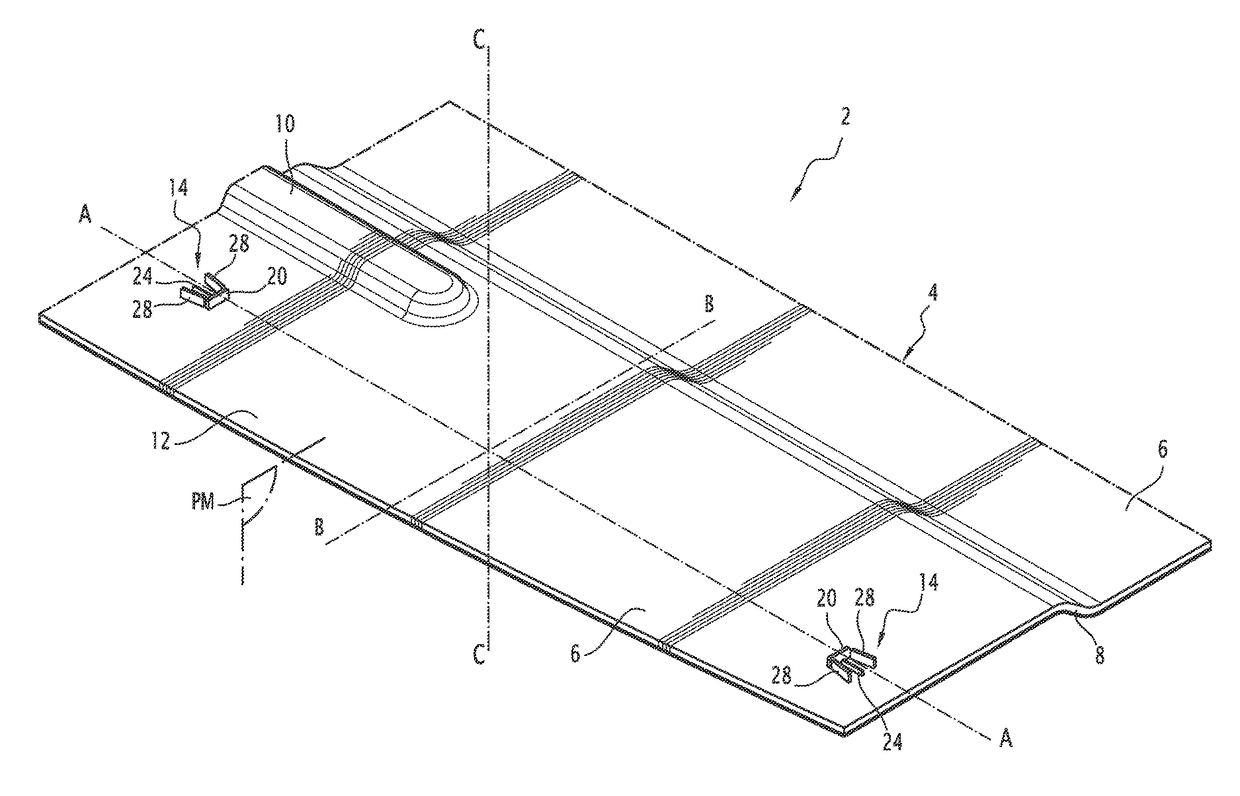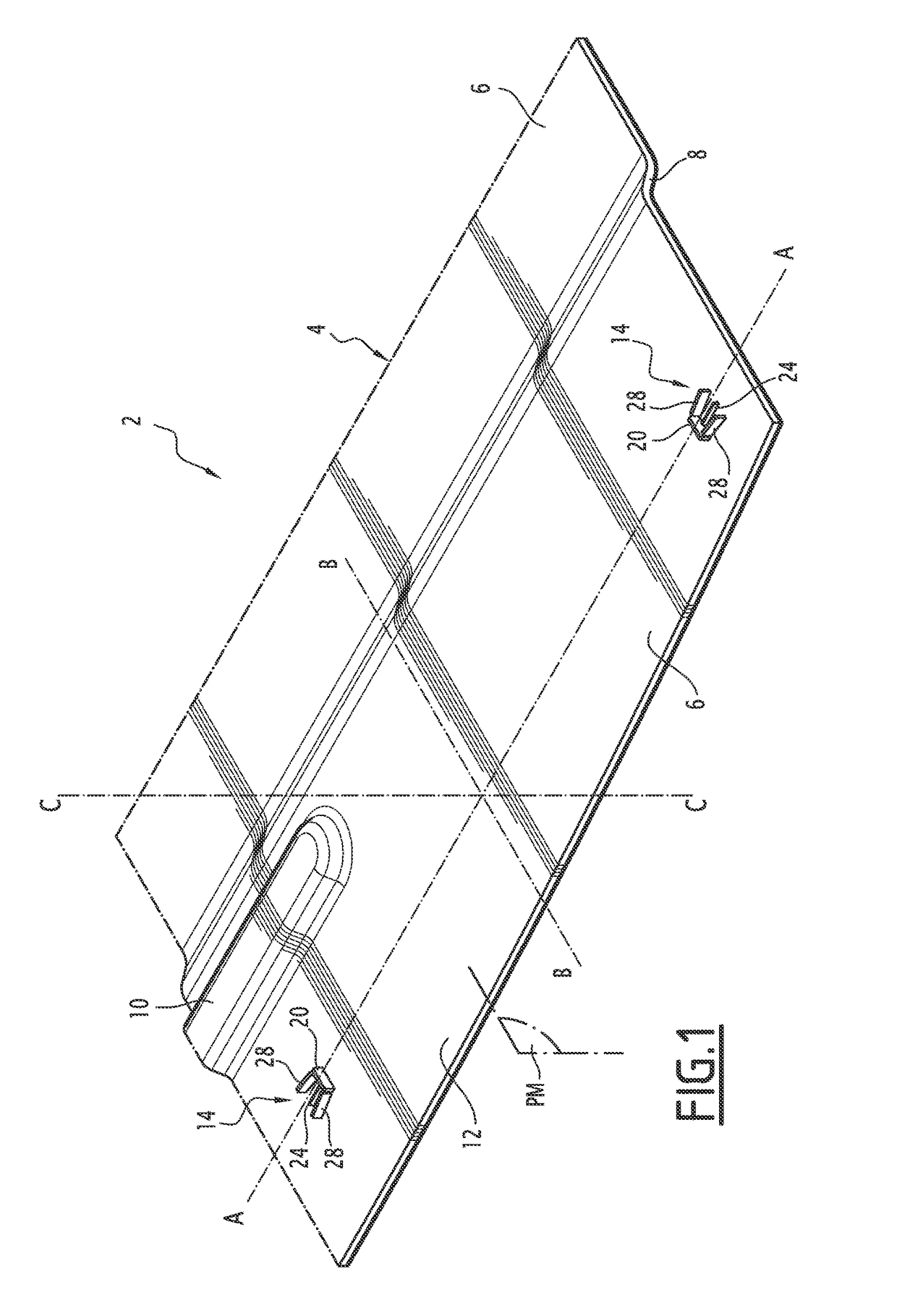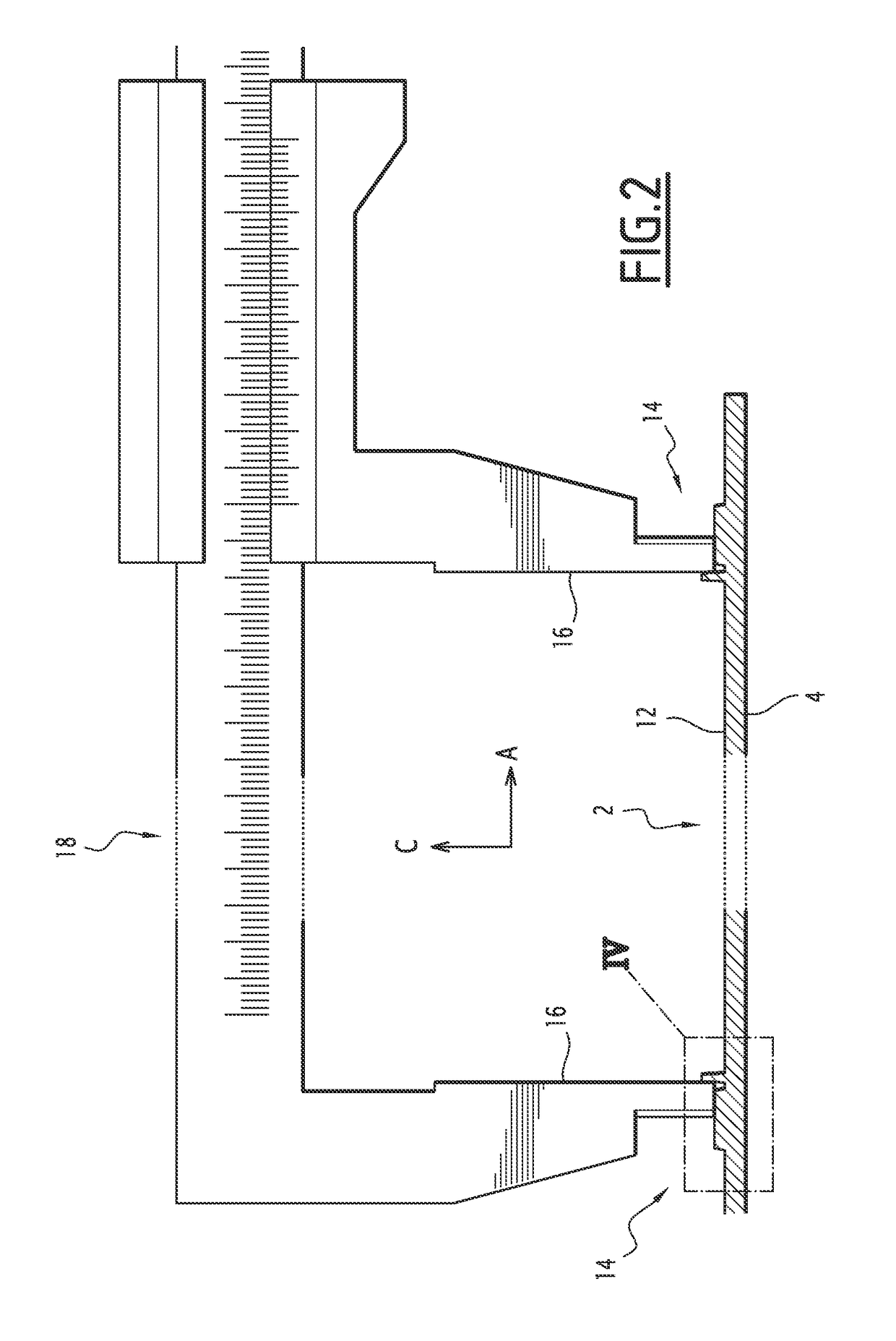Molded part and its manufacturing method
- Summary
- Abstract
- Description
- Claims
- Application Information
AI Technical Summary
Benefits of technology
Problems solved by technology
Method used
Image
Examples
Embodiment Construction
[0027]The molded part 2 in plastic material of FIG. 1 is for example from an automobile vehicle part, for example a part of a trim panel, notably a part of an interior trim panel.
[0028]The molded part 2 has a plate-shaped body 4. The plate-shaped body 4 is here formed in three dimensions. It comprises here two pads 6 connected through a discontinuity 8, one of the two pads being provided with a boss 10.
[0029]The body 4 has a surface 12 on which are molded two associated positioning relief portions 14, intended for positioning two sensor members 16 of a measuring tool with view to proceeding with dimensionally controlling the molded part 2. The surface 12 of the body 4 on which are positioned the two positioning relief portions 14 extends over one of these pads 6.
[0030]Both positioning relief portions 14 are spaced apart from each other along a measurement direction A. Both positioning relief portions 14 are each isolated on the surface 12 of the body 4. They are each just spaced apa...
PUM
| Property | Measurement | Unit |
|---|---|---|
| Height | aaaaa | aaaaa |
| Distance | aaaaa | aaaaa |
| Displacement | aaaaa | aaaaa |
Abstract
Description
Claims
Application Information
 Login to View More
Login to View More - R&D
- Intellectual Property
- Life Sciences
- Materials
- Tech Scout
- Unparalleled Data Quality
- Higher Quality Content
- 60% Fewer Hallucinations
Browse by: Latest US Patents, China's latest patents, Technical Efficacy Thesaurus, Application Domain, Technology Topic, Popular Technical Reports.
© 2025 PatSnap. All rights reserved.Legal|Privacy policy|Modern Slavery Act Transparency Statement|Sitemap|About US| Contact US: help@patsnap.com



